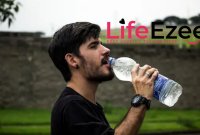“Move your butt” is a fantastic technique for runners vying for a brand new personal file, a spot on the rostrum, or just hoping to complete a marathon. However, coaching can kick a runner’s bottom. Though we regularly consider operating as a physical exercise that places stress on the quads, hamstrings, calves, and toes, the glute muscular tissues play a pivotal function in powering every stride.
The glutes preserve the pelvis regularly, protecting the hips, knees, ankles, and toes aligned and dealing collectively. These muscular tissues additionally assist and forestall the knees from caving. The result? There’s much less of an opportunity you wind up benched on account of harm. Solid glute muscular tissues energy a robust stride, making you a greater, quicker runner.
Despite these advantages, runners are sometimes advised to stint on energy exercises, primarily if coaching for a long-distance race like a half or full marathon. Spending about 10 minutes twice weekly strengthening your glutes is value the extra effort.
Related
- 4 great exercises that require no tools, solely your body weight
- 9 efficient core exercises for males coping with diastasis recti
- Core exercise routines for runners: These 5 core exercises will make an enormous distinction
To get you began, we’ve assembled seven important glute exercises for runners, plus some stretches in your cool-down.
7 good glute exercises for runners
Glute exercises can supercharge your targets as a runner, quickening your tempo or no less than serving to cut back your harm threat. There are tons of glute exercises to select from, together with some basic energy coaching strikes. None of those strikes require tools, however, a kettlebell or pair of hand weights can add resistance (and, subsequently, a problem) to your routine.
Hip Bridge
Works: Glutes, hamstrings, and abs
A hip bridge is a low-impact, beginner-friendly technique to strengthen the decreased body while stabilizing the core.
- Lie in your again on the ground or yoga mat together with your knees bent in step with your toes, which need to be flat on the ground. Place your hands by your aspect.
- Squeeze your glute muscular tissues and picture you’re drawing your belly button in towards your backbone.
- Lift your hips off the ground till they align with the knees and shoulders.
- Hold for 30 seconds.
- Lower the hips again to the ground.
- Repeat 10-20 reps for a complete of 3-5 sets.
Single-leg deadlift
Works: Glutes, core, hamstrings, and back
The single-leg deadlift requires little motion. However, the exercise works several muscular tissues. Bonus: The single-leg deadlift is a glute exercise that works the core in a method that challenges you to maintain your steadiness, an integral part of staying within the recreation as a runner. Runners can up the ante on this transfer by grabbing a dumbbell or kettlebell.
- Stand with feet hip-width distance apart. If you’re utilizing resistance, place the burden in your arms at the entrance of your thigh.
- The hinge on the hips as you place weight on the left leg, extending the fitting leg straight again as you squeeze your glutes.
- Stop when your leg is straight behind you and your body forms a “T” form from head to toe. Any weight you employ needs to be in your arms, operating parallel to the ground.
- Return to the beginning place slowly.
- Repeat on the alternative aspect for one rep.
- Do 10-20 reps on 3-5 occasions.
Reverse lunge
Works: Hamstrings, core, and glutes
This reverse lunge not only works the glutes and hamstrings, but, the quintessential at-home energy transfer additionally works your best muscle: The thoughts. Switching up basic ahead lunge forces your thoughts and body to work differently, proving you may pivot. Add one other layer by holding hand weights or putting your arms over your head to additional stress the need for steadiness.
- Stand straight with toes barely nearer than hip-width distance aside. Put your arms on your hips.
- Take a large step again with the fitting foot.
- Lower your hips till your left thigh is parallel to the ground and the fitting knee is bent at a 90-degree angle. Your proper heel needs to be lifted off the ground.
- Press your left heel into the ground and return your proper leg to the beginning place.
- Repeat on the alternative aspect for one rep.
- Do 20-25 reps for a total of 3-5 sets.
Side leg raises
Works: Core, hips, glutes, and thighs
Another low-impact transfer, side-leg raises don’t put a lot of stress on your joints. However, the exercise successfully works the glutes.
- Stand upright together with your toes touching one another. Place your arms on your hips.
- Engage the abs and stabilize your hips as you raise your leg to the aspect. Refrain from swinging. Add resistance even with no weight by pretending you’re pushing in opposition to one thing heavy with your leg as you raise.
- Repeat 8-12 occasions. Switch sides. Do 2-4 units.
Squat
Works: Quads, hamstrings, and glutes
A functional strength exercise, the squat hits the main lower-body muscle teams and might be completed with or without weights.
- Stand with toes barely wider than hip-width distance aside and toes front-facing.
- Bend your knees and drive your hips again. Your toes ought to stay planted on the ground.
- Stop when your thighs are parallel to the ground at a 90-degree angle together with your knees (if you happen to feel pain or can’t hit this place, that’s OK).
- Squeeze your glutes as you come back to begin.
- Do 10-20 reps, 3-5 times.
Fire hydrant
Works: Glutes and core
This transfer can feel a touch silly. The fireplace hydrant’s title comes from canine, who raise their legs at the sight of 1. Have a humorousness — your glutes will thank you.
- Get in your arms and knees. Your shoulders and arms need to be in a single line. Same for the knees and hips. Look down.
- Squeeze your glutes as you increase your proper leg.
- Stop when your proper leg is in step with your hips. (People with much less mobility might should cease sooner.)
- Lower again to begin. Repeat ten occasions.
- Switch legs and repeat. Do 3-5 units.
Clamshell
Works: Hips, glutes, and core
Another low-impact transfer, this mobility booster works the glutes without placing a lot of stress on the joints. Therefore, the clamshell is right for people making an operating comeback post-injury.
- Lie in your left aspect with knees stacked and bent at a 90-degree angle. Your toes also need to be collective.
- Pretend your ankles are superglued as you raise your proper (high) knee.
- Squeeze your glutes, and cease when the fitting knee parallels the hip.
- Lower again to begin. Repeat 20 occasions.
- Switch sides and repeat. Do 3-5 units.
Glute stretches for runners
After a glute exercise or run, including these stretches will velocity up restoration and assist forestall accidents.
Figure Four
This transfer might be completed standing or sitting. We’ll go over how one can do a seated determine 4.
- Lie on the bottom together with your knees bent in entrance of you and toes flat on the ground.
- Place your proper ankle barely above the left knee to type a “4” form.
- This place could also be sufficient to get a stretch. However, you may draw each knee towards the body for a deeper stretch. Regardless, maintain for 30 seconds.
- Repeat on the alternative aspect.
Pigeon pose
This widespread yoga transfer opens the hips and stretches the glutes.
- Place your proper shin so it’s parallel to the wall at the entrance of you (or the entrance of your yoga mat). Your left leg needs to be prolonged straight behind you.
- Deepen the stretch by leaning ahead to put your arms on the ground (and brow, if you can).
- Hold for a minute.
- Repeat on the alternative aspect.
Seated twist
The seated twist could also be a throwback to your youth sports activities days. The stretch stays helpful for grownup runners with tight glutes.
- Sit on the ground together with your legs stretched in entrance of you.
- Bend the left leg. Bring the leg over the fitting thigh.
- Hug your left leg together with your proper arm. Place your left hand diagonally behind your left hip.
- Hold for 30 seconds. Repeat on the alternative aspect.
If you’re experiencing pain, converse with a healthcare supplier. A personal coach may test your type and supply personalized tips.




